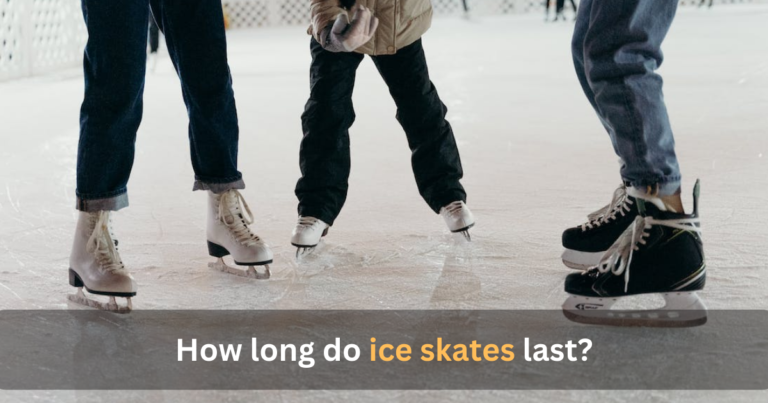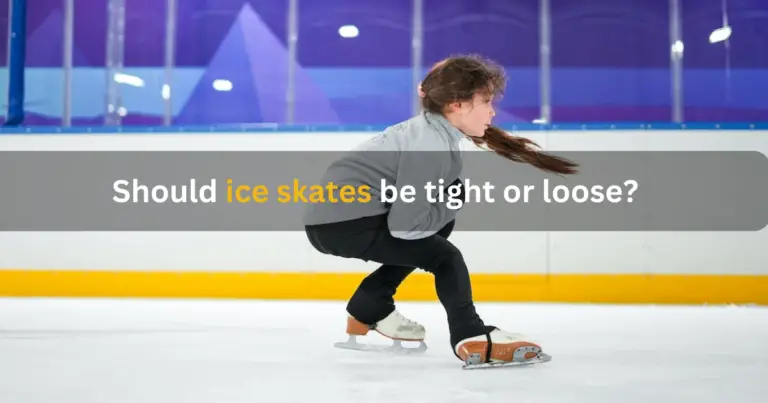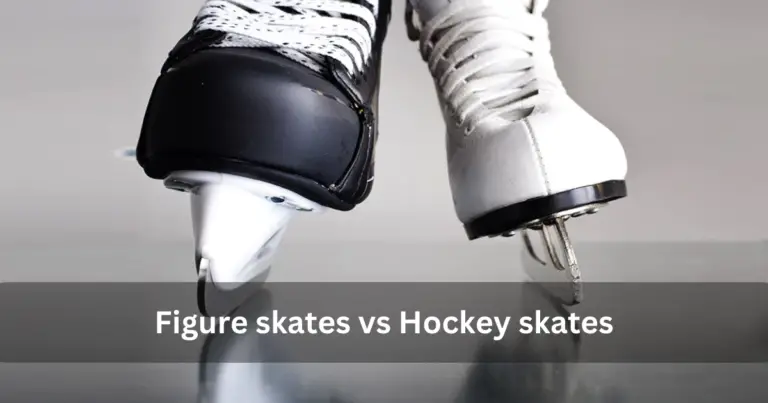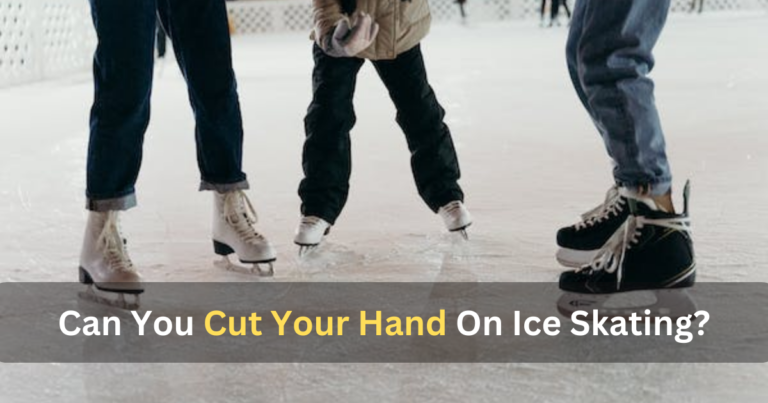
How Hard Is It To Ice Skate?
You can ice skate and have fun if you are in good health, no matter how old. I always tell people to try ice skating at least once or twice because so many stand on the sides for fear of falling or “looking silly,” as one mom put it.
Ice skating is challenging until you learn how to keep your balance, but there are ways for a beginner to learn to skate faster. You can learn everything about it here. Learning how to ice skate is hard, but the average person can do it.
People find it hard to balance on ice skates because the blades are so thin. It is hard at first, but after a few weeks of practice and learning to balance, it gets pretty easy, and you can pick up speed.
Is it easy to ice skate? Why or why not?

It’s easy, why?
But here are some reasons why it’s not hard to skate on ice:
- Body balance is a reaction; once you try ice skating, your body will keep working on it even when you’re not on ice. So, when people come to the rink a second or third time, they often notice a quick change in how well they can balance.
- The first time you walk or glide is very close to how you usually walk or glide. The rest is easy once you learn to stay balanced on a blade. It’s different than playing the guitar, where you have to train your fingers to bend and hold the instrument in a certain way.
- How well you can ice skate depends on how well your gear fits. The rest is straightforward once you have the right-sized ice skates, socks, etc..
- To learn the basics, you can use a pro. Getting the primary balance and movement right usually takes some practice on your own or with the help of a friend or family member.
It’s Not that easy, why not?
- Realizing that skating is a whole-body exercise is the hardest part of skating.
- On your skates, you don’t just stand there.
- As soon as you stand up, your legs help you maintain balance. To make your legs work, bounce up and down.
- You then determine where your shoulders fit in. Please note how every skater uses their shoulders and arms to maintain balance. The components are often held wide, with strength running from the point of one finger through the shoulders to the tip of the other arm.
- You can use the torso to join the arms and legs. Skaters have steel-like abs.
- To prevent the body from jerking back and forth, arms and shoulders support the body.
The feeling of ice skating

1. Enchanting
It’s like quiet gliding when done correctly. Tranquil, rhythmic, and even mesmerizing. If you go quicker, it will seem like you are flying down a runway and pumping your wings to take off.
When you go low and move quickly, your quadriceps and lower back start to burn as you simultaneously hold yourself up and keep yourself down.
Start pushing through the twists and crossing your feet over one another, and the world starts to speed up, wild and on the verge of losing control, with one or two fingers barely touching the ice to keep you anchored and remind you of where you are.
2. Warmth of enthusiasm
The continual cold air well matches any effort you make. The more quickly you move, the more you cool down. You tend to feel warm when you stop, even with only a T-shirt and pants.
walk about on the thick rubber mat after leaving the rink like you’re on a short set of shaky stilts.
3. feel empowered
You can think about anything when it’s sluggish and silent, like you’re on autopilot. It is reflective. When moving quickly, you are aware of the blades on your feet. You’re encouraging yourself to do each step correctly and to push yourself when it’s time.
When you’re just slightly off, you feel frightened and unsure of yourself, but when you’ve got the balance and placement precisely perfect, it feels rock solid and safe, and you feel like more than just a mortal—like speed itself.
How long does it take to learn how to ice skate?

To learn the basics, it should take you between 7 and 10 hours. That didn’t happen in one day; it took over two months. That’s about an hour once a week.
Even better is if you can go twice a week. If you go to the rink more than once, you can sleep between practice sessions, which will help you learn faster.
As I said, it takes between 7 and 10 hours, but it depends on what you call the basics. I’m talking about the basics here, like gliding on two feet, turning around on the spot, and moving forward with some control.
Group classes are a great way to learn how to skate, but you can only take them once a week, which could be a problem if you need to know quickly for a date or something.
Then, if you practice a couple of times a week, you can do an excellent job on your own (to get your essential balance and start moving, you will need lessons for the more complex stuff).
Can you teach yourself to ice skate?

Yes, you can teach yourself how to ice skate. You will, however, be able to learn only so much. You will make less progress than if you took lessons or had a teacher.
If this is your first time putting bricks together, you must build a wall before doing it. If you made it for the first time, it might fall. It might stand up if you created it again, but it must be straight.
Now, let’s say you have to build a wall for the first time all over again. But this time, a trained builder stands next to you and tells you what to do. You would learn a lot faster and make a lot less mistakes.
This is a lot like how to learn to ice skate. You can learn the basics independently, and at some point, you must. But with a skilled coach, you will learn to ice skate faster and possibly safer.
Tips to learn ice skating
- The best way to become better at something is to practice doing it.
- Learn How to Ice Skate by Viewing Online Videos!
- Skate for ten to thirty minutes.
- Getting Over Your Fear of Heights
- Learn From a Professional or a Friend. Invest in the Right Size Ice Skates
Learn How To Ice Skate as an Adult

- Make sure the laces (or buckles) are tight around the ankle and the foot and allow space at the top to press your knees over your toes. “The laces [at your ankle] are too slack if you can get your fingers underneath them.
- Keeping your weight evenly distributed over both skates is the simplest way to stay balanced. When you graduate to gliding on one skate, you’ll need to distribute your weight over your skating hip, leg, and foot, so try to avoid leaning forward or backward. First, pay attention to how your body is aligned.
- Spend some time skating outside the rink on your blades before entering the ice. To avoid rolling from heel to toe (or toe to heel), practice maintaining your feet flat as you lift your knees. This will ensure that the entire blade touches the floor at once.
- Falling on the ice is slightly more terrifying when your face is at least five feet from the ground. The risk is only increased by the razor-sharp edge of the skates. Because of this, the majority of skating lessons teach skaters how to fall.
- Next comes two-footed skating, and swizzles are enjoyable. Why? There is little danger because both feet remain firmly planted on the ice, but there are good benefits because you may gain speed and begin to glide, giving the impression that you are finally learning to skate.
- Do not anticipate a sudden stop. Right now, attempting to would result in a tumble. Beginners ought to concentrate on the snowplow stop. You can use both of your legs. Hold onto the wall, then push your feet to the sides while maintaining a firm ankle. Move away from the boards and take up a little pace once that seems more comfortable. The same action again.
- Now that you’ve mastered two-footed skating and the snowplow stop, it’s time to practice gliding on a single skate. Like riding a scooter, you stand on one foot and go forward with the other. There are two critical variations while using skates: You must alternate which foot you are gliding on and turn your pushing foot outward to prevent your skate from sliding out from under you.
- No matter what rink you’re on, you’ll ultimately have to make a turn. However, this is relatively easy to do if your alignment is sound. Tilt your head and shoulders gradually in the desired direction. Your hips and knees should align with your shoulders to easily round the curve. Depending on how quickly you’re moving, you could also need to tilt that way.
- Skating seems more straightforward than it is. Be liberal with your breaks the next time you go to the rink. You’ll need time for your feet and ankles to warm up and recover.
- It is possible even if learning to skate as an adult is only sometimes straightforward.
Conclusion
Ice skating can be challenging to learn if you’ve never done it before, and it can be even more complicated if you have no previous athletic background.
However, something can only be fixed with a bit of practice. Keeping your balance would be the most challenging task. You know, that makes the other fundamental stages easier to follow. To perfect any part of ice skating, you can still plan to put in a lot of effort.
FAQs
Q: Can I learn to ice skate in my thirties?
Any age can start learning how to skate. You can look for adult figure skating or hockey skating classes online.
Q: Is ice skating a problematic sport?
Even though it’s one of the most challenging sports to learn, ice skating is also among the most well-liked. Skating on thin ice while losing balance and strength is relatively easy.
Q: What should a novice skater do?
- Purchase skates that are comfortable to wear.
- Wear the appropriate layers.
- Obtain the assistance you require.
- Fourth, take your time.
- Be optimistic.
- Start advancing an item.
- Practice a few falls.
- Practice stopping and gliding
Video guide:
Read Also
- Why Is My Skateboard Squeaky? How To Stop In 2023
- Should You Buy A Walmart Skateboard? – Weighing The Pros And Cons In 2023
- How To Slow Down On A Skateboard? – Step By Step Guide In 2023
- Can You Cut Your Hand On Ice Skating? – How To Avoid In 2023
- What Does ‘Skate’ Mean In Slang? – A Comprehensive Guide In 2023
- Penny Boarding Vs. Skateboarding: Differences And Similarities In 2023




